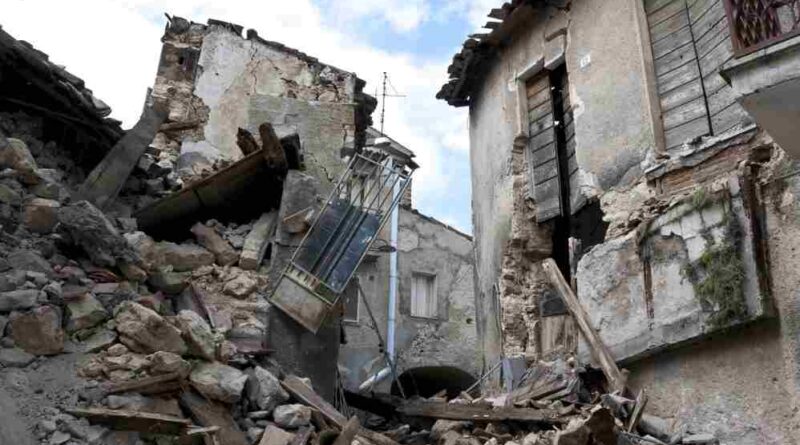Massive Earthquake Near Russia Sparks Tsunami Warnings Across Pacific: Here’s What You Need to Know
In the early hours of the morning, a powerful undersea earthquake shook the Kuril Islands near Russia’s eastern coast, setting off a ripple of concern that quickly spread across the Pacific. With a magnitude of 7.5, this seismic event triggered widespread tsunami alerts, sending shockwaves—not just through the earth—but through governments, coastal communities, and residents on edge from Alaska to Japan.
A Wake-Up Call for the Pacific Rim
Tsunami warnings lit up emergency alert systems in multiple countries, including the United States, Japan, and Russia. Coastal regions of Alaska, Hawaii, and even parts of the U.S. West Coast were placed on high alert as meteorological and geological agencies scrambled to assess the threat.
While the epicenter was deep beneath the sea near Russia’s Kamchatka Peninsula, the quake’s impact was far-reaching. Tsunami waves were predicted to potentially affect low-lying areas thousands of miles away. This wasn’t just a local disturbance—it was a wake-up call for the entire Pacific Rim, reminding people of nature’s raw and unpredictable force.
Emergency Systems Activated Across Borders
Alaska was among the first to respond. Sirens blared across coastal communities. In Kodiak Island and other vulnerable areas, residents were advised to move to higher ground. Schools were closed, emergency shelters opened, and helicopters patrolled from above to monitor crowd movement and ensure people were heeding evacuation orders.
In Hawaii, the Pacific Tsunami Warning Center went into full gear. Authorities urged residents to prepare for possible wave activity, even though no immediate evacuations were ordered. The uncertainty of oceanic behavior after such a large quake left people holding their breath.
California also issued advisories along its coastline. Though waves here were predicted to be significantly smaller, officials warned of strong currents and urged beachgoers to stay away from the water.
Japan’s Coastal Communities on Edge
Japan, no stranger to seismic activity, took no chances. Early warning systems went off in several parts of Hokkaido and northern Honshu. Trains were halted, flights rerouted, and fishing boats ordered back to shore. While the initial data suggested the tsunami impact in Japan would be minimal, memories of past disasters—like the 2011 earthquake and tsunami—kept tensions high.
Russia’s Far East Shaken But Holding
Closer to the epicenter, towns along Russia’s sparsely populated eastern coast reported tremors strong enough to rattle windows and knock items off shelves. Emergency crews conducted inspections of infrastructure, though so far no major damage or casualties have been confirmed. Still, the quake was felt deeply—both physically and emotionally—by residents in the area.
What Happens After the Waves?
Seismologists have stated that aftershocks are likely in the coming days, and they could be powerful. Emergency agencies across affected nations are staying on high alert, coordinating communication, and ensuring that evacuation routes and contingency plans remain ready to go at a moment’s notice.
One of the key lessons from today’s events is the importance of preparedness. Many communities responded efficiently, thanks to years of drills, upgraded early warning systems, and better public awareness. But the unpredictability of natural disasters means there’s always room for improvement.
Citizens React With Caution and Concern
Social media lit up with videos of trembling trees, shaky camera footage from homes, and sirens echoing through foggy coastlines. “We grabbed the kids and ran to higher ground,” said one resident from Alaska. “You just don’t wait around when you hear that siren.”
In Hawaii, one surfer was caught on video leaving the beach reluctantly after being warned. “I’ve been through these before,” he said, “but I’m not taking chances this time.”
And in Japan, a woman in Sapporo said, “Every time an alert goes off, we relive the fear. We just hope it’s not another big one.”
Scientists Monitoring the Situation
Experts are continuing to monitor oceanic sensors and satellite data to track any further disturbances. While initial tsunami surges appear to have passed with limited damage in most regions, the full impact may not be clear for hours or even days. Tsunami energy can travel across entire ocean basins, and scientists remain vigilant.
A Reminder of Our Fragile Planet
This event is a stark reminder of how interconnected and vulnerable our world is—especially along the “Ring of Fire,” the horseshoe-shaped zone in the Pacific where most of the world’s earthquakes occur. A single seismic event in one remote part of the globe can set off alerts, emergency responses, and heart-pounding fear halfway across the ocean.
For now, communities are returning to cautious normalcy. Authorities are lifting advisories where safe, but the mood remains sober. This quake didn’t turn into a catastrophe—but it was a global drill in readiness, resilience, and the fragile balance we all live with.
Disclaimer
The information and content shared on digitalgithub.com — including articles, blogs, news, guides, and other resources — is intended for general informational and educational purposes only. We do not guarantee the completeness, reliability, or suitability of any information. Always seek the guidance of a qualified professional before making decisions based on the information you read. Use this site at your own risk.

